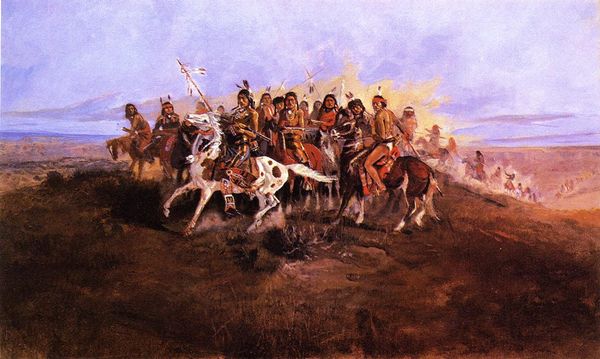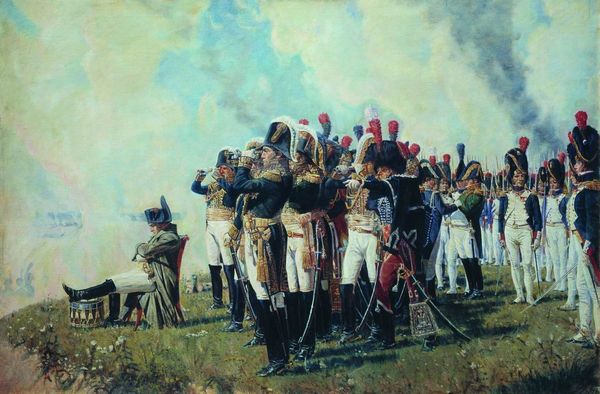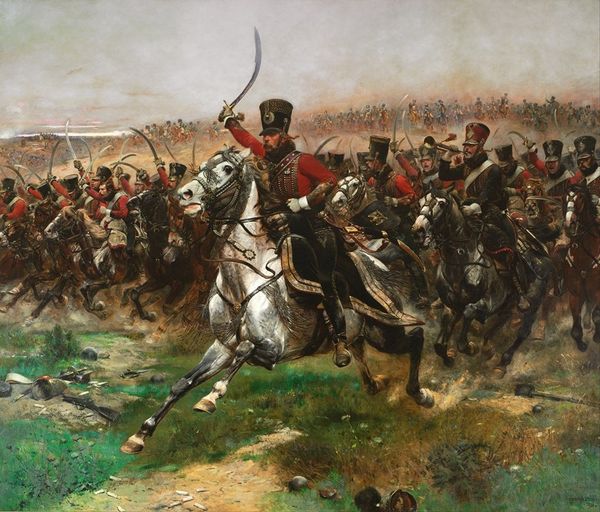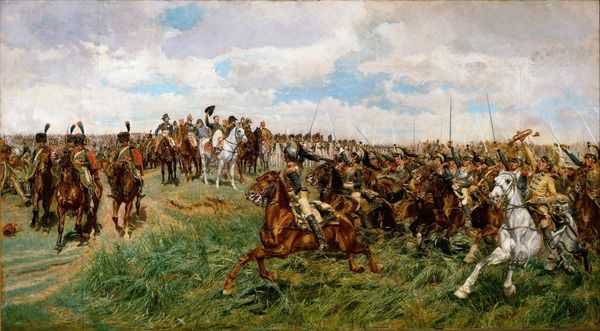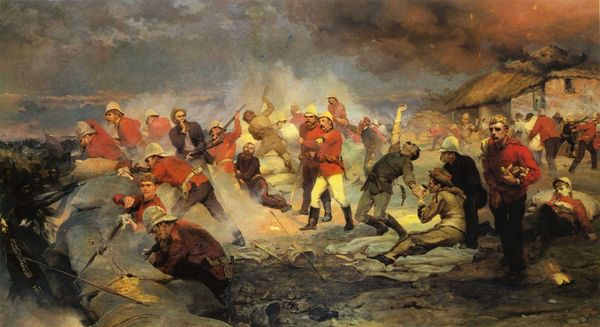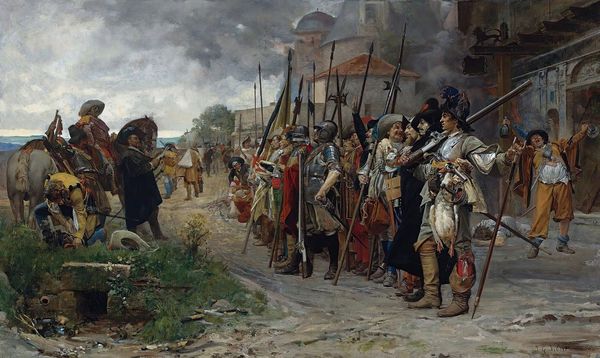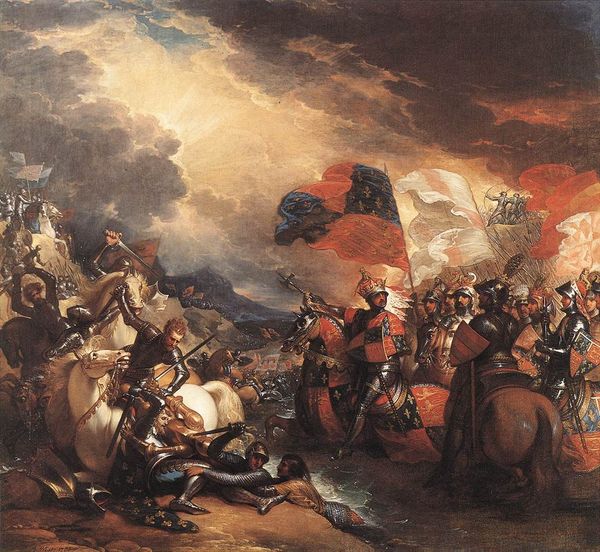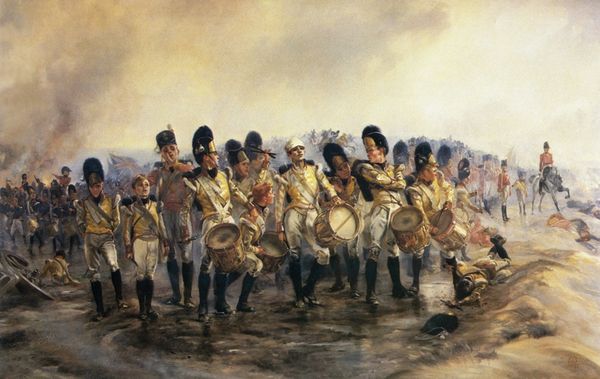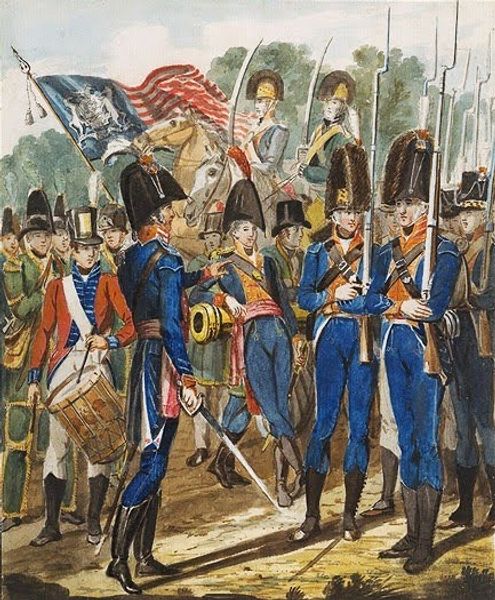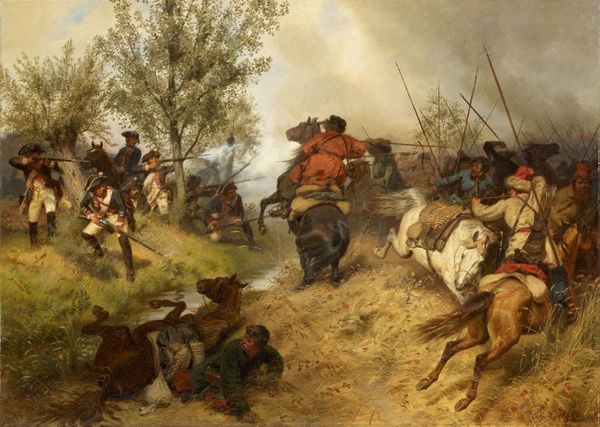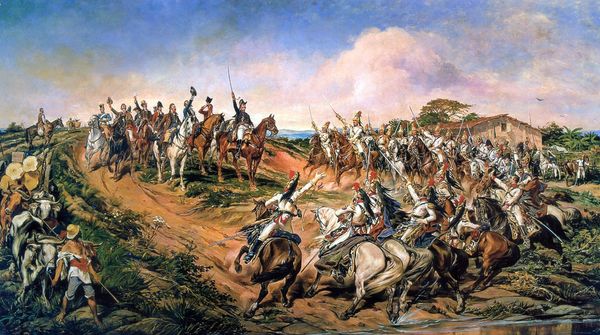
painting, oil-paint
#
portrait
#
narrative-art
#
painting
#
oil-paint
#
figuration
#
oil painting
#
romanticism
#
history-painting
Copyright: Public domain
Curator: We’re looking at "Bolivar en el paso de los Andes," a painting possibly by Arturo Michelena. It's an oil painting. Art Historian: The piece feels epic. Even with the almost sketch-like quality, there is a strong sense of leadership. And the colors! Those earthy tones punctuated by the vibrant flag--they evoke determination, grit, and a kind of revolutionary fire. Curator: Indeed. And a very particular historical and political reading. This piece can be viewed as part of a broader Latin American artistic effort to grapple with colonialism. Its approach reflects a visual construction of nationhood and leadership, using Bolivar as a symbol for an imagined independent Venezuelan identity. Art Historian: Yes, he's like a modern Caesar in many ways! Consider the symbolic importance of the Andes themselves: mountains representing hardship, barriers, challenges that can be overcome. His leadership becomes, symbolically, a triumph over adversity. The figures surrounding Bolivar also suggest strength in unity, representing his army, yet it simultaneously evokes collectivity. Curator: It’s interesting how Romanticism lends itself so readily to these nationalist narratives. The individual, the hero—Bolivar—is seen as a vessel for collective will. But I wonder, what’s sidelined in this almost celebratory portrayal? Where are the voices of marginalized groups or even, if we think intersectionally, acknowledgement of gender? Art Historian: Absolutely a fair critique. While not overtly present, it's possible those same concepts exist. This painting does embody certain shared experiences of collective struggle—visual shorthand—so the emotional weight is tied to the symbolism. It’s all rather ingeniously loaded into this single moment. Curator: And ultimately, isn't the artist's chosen imagery here less a depiction of fact and more a declaration of aspiration—a potent symbol designed to shape how future generations viewed not only Bolivar but Venezuelan identity as a whole? Art Historian: I think so, yes. In the language of images, this painting speaks volumes about history, heroism, and the enduring power of symbols. Curator: Agreed. It highlights how art engages in constructing those very stories that become nations.
Comments
No comments
Be the first to comment and join the conversation on the ultimate creative platform.
